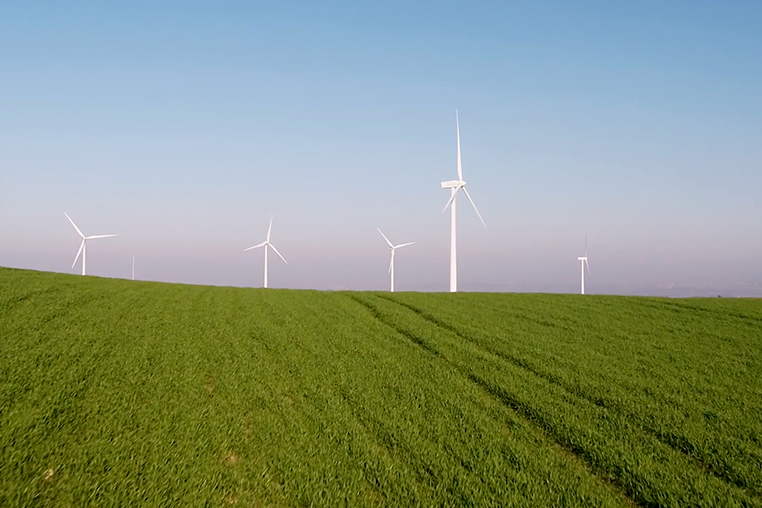Repowering of wind farms
Do you know what repowering of wind farms is and how it is carried out?
Offshore wind Onshore wind Energy transition
Wind energy, whether offshore or onshore, is a renewable, clean and inexhaustible resource, which is why it has become one of the most important energy sources. Here, we will tell you all the details about this process.

June 2023

Approximately 5 minutes

Wind energy is one of the most important renewable energy sources in the world. As an inexhaustible, renewable and clean resource, it has become a key tool for moving towards energy transition and a more sustainable economy. Wind farms, clusters of wind turbines, either offshore or onshore, designed to generate wind energy on a large scale, are essential to this end.
However, like any technology, wind farms have a limited lifetime. When a wind farm nears the end of its design life, there are three options: prolonging its life through maintenance, decommissioning or repowering. The latter mainly consists of replacing (partially or totally) the old turbines with more powerful and efficient models using the latest technology. Repowering can multiply the generating capacity of a wind farm and significantly increase electricity production. The reason is simple: each new turbine produces more energy than the old ones and therefore fewer units are needed. According to data from EoLIS 2022, WindEurope's annual event, on average, repowering reduces the number of turbines in a wind farm by a quarter, while increasing the installed capacity of the wind farm by a factor of 2.7 and tripling its electricity production.
This is why repowering is particularly effective in older wind farms, which were usually located in the best wind conditions and now, due to the passage of time, are not as efficient as they could be with new technologies. However, currently less than 10 % of wind turbines reaching the end of their useful life are being repowered, mainly due, according to WindEurope, to slow and complex authorisation procedures. WindEurope also points to the differentiation of countries in terms of repowering their wind farms. So far, less than 200 wind farms have been repowered in Europe, more than half of them in Germany.
Why do you repower a wind farm?
After some years of operation, there may be different reasons why it is possible to repower a wind farm in order to upgrade and modernise it to extend its lifetime and increase efficiency. Some reasons why a repowering of a wind farm may be desirable are:
- Turbine obsolescence: Wind turbines may be older and less efficient than newer, more advanced turbines, limiting the energy output of the wind farm. Additionally, they may reach the end of their useful life and a decision needs to be made.
- Increasing demand for renewable energy: The growing demand for renewable energy may lead to consider repowering as a way to increase the energy production capacity of the wind farm and respond to this growing market demand.
- Technology improvement: Wind turbine technology is improving all the time, so repowering can be considered in order to implement these advances and improve efficiency and production capacity.
- Changes in regulations: Government regulations and energy policies can change over time, affecting the viability of an existing wind farm.
Evolution of the unitary power and the rotor of our onshore wind turbines
What are the main advantages of repowering a wind farm?
The repowering of a wind farm offers a number of benefits that can justify the investment and effort required to carry out the process, although this must be analysed for each specific site. Repowering involves a heavy investment by the wind farm developer and therefore requires stable regulation to incentivise developers to make the investment decision. Some of the main advantages of repowering a wind farm include:
- Increased energy production capacity: One of the most important advantages is the increase of its energy production capacity. Installing larger and more efficient turbines or upgrading components can significantly increase the amount of energy generated by the wind farm.
- Improving efficiency and reducing costs: Repowering also improves the efficiency of a wind farm while reducing operating and maintenance costs. More advanced turbines are more efficient as they generate more energy with less wind, and require less maintenance costs.
- Progress towards decarbonisation: The repowering of wind assets is a clear opportunity to modernise the wind farm and thus move us closer to decarbonisation targets at a lower cost.
- Better integration into the electricity grid: The replacement of the turbines with state-of-the-art units ensures better integration compared to older machines.
- Preservation of employment: In contrast to total decommissioning, repowering preserves employment and benefits for the local community in which the wind farm is located.






